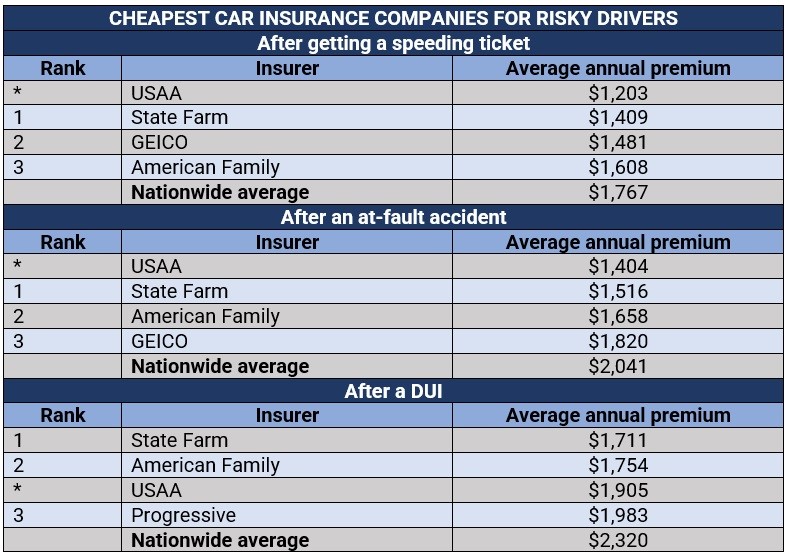The Prospects of Car Protection: Improvements and Trends to Observe

The landscape of vehicle insurance is undergoing a major change, influenced by progress in technology and shifts in buyer demands. As driving habits change and cars become smarter, the auto insurance industry is adapting to satisfy evolving demands. These innovations not only enhance the customer experience but also aim to enhance the precision of insurance pricing.
Developments such as telematics, AI, and pay-as-you-drive insurance are leading for a much personalized approach to vehicle insurance. Looking towards very cheap car insurance no deposit , it is essential to explore the developments that are defining this sector and how they will impact both providers and consumers alike. Comprehending these innovations can assist consumers make knowledgeable decisions and navigate the challenges of auto insurance in an ever more dynamic market.
Emerging Technologies in Car Insurance
As the vehicle insurance industry transforms, new technologies are altering how insurers determine risk and engage with customers. Cutting-edge data analytics and artificial intelligence are now essential tools for insurers, enabling them to analyze vast amounts of driving data collected from telematics devices. These devices observe driving behavior, providing insights into velocity, deceleration patterns, and overall safety on the road. Insurers can use this data to create personalized policies based on personal risk profiles, resulting in more accurate premiums and potentially lower costs for cautious drivers.
Another significant technological breakthrough is the use of blockchain in car insurance. This technology ensures transparency and security in transactions between insurers and customers. Smart contracts, a feature of blockchain, can facilitate claims processing, reducing the time and complexity involved in finalizing claims. By providing a secure and tamper-proof way to store insurance policies and claims history, blockchain can improve trust between customers and insurers, finally streamlining the entire insurance process.
Furthermore, the rise of connected cars is poised to transform the auto insurance landscape. With vehicles fitted with internet connectivity and sophisticated sensors, insurers can obtain real-time data on vehicle condition and incidents. This information not only helps in risk assessment but also allows proactive measures to prevent accidents. As the market for connected vehicles increases, look for to see insurance products specifically designed for these smart vehicles, customized to their special features and the data they provide.
Trends Transforming the Future of Auto Coverage
An of the key developments redesigning auto insurance is the adoption of technology, particularly the implementation of telematics. Insurers are increasingly employing devices that monitor driving behavior, such as speed, braking patterns, and even time of day driving. This data enables companies to offer customized premiums based on individual risk profiles, promoting more responsible habits and possibly decreasing costs for consumers who exhibit responsible behavior. By harnessing this real-time information, the industry is shifting towards a more tailored approach to pricing and policy development.
A pivotal trend is the rise of flexible insurance models. As consumers consider alternative transportation options and adopt car-sharing services, insurers are starting to offer flexible coverage that caters to diverse driving habits. This shift reflects a transformation in consumer behavior, with many individuals seeking insurance that corresponds to their actual usage rather than the standard fixed annual premiums. As a result, benefit packages are designed to accommodate occasional drivers or those who utilize alternative vehicles, enhancing accessibility and affordability in the insurance market.
In addition, the emergence of artificial intelligence is changing claims processing and customer service in auto insurance. Automated systems can evaluate claims quickly, reducing the time it takes for consumers to receive payments or repairs. Additionally, AI-powered chatbots and virtual assistants are enhancing customer interactions, providing immediate responses to inquiries. This trend not only boosts customer satisfaction but also allows insurers to streamline operations and reduce administrative costs, paving the way for a more efficient and responsive insurance landscape in the future.
The Impact of Artificial Intelligence and Large Data Sets on Rates
Artificial Intelligence and Large Data are transforming how car insurance providers evaluate risk and establish rates. By utilizing vast amounts of data, these tools enable insurers to analyze driver behavior in real-time, taking into account different aspects such as driving habits, use of vehicles, and including environmental conditions. This sophisticated analysis enables insurers to offer tailored rates that reflect individual risk profiles rather than relying on generalized statistics.
Moreover, artificial intelligence algorithms can quickly process claims and identify fraud more efficiently than conventional approaches. This not only speeds up the claims handling for genuine clients but also lowers costs for insurers, leading to more advantageous rates. As insurers continue to improve their models using ML techniques, the precision of risk evaluations will only improve, resulting in fairer insurance premiums customized for each client.
As the use of AI and large datasets becomes more common, we can expect a substantial change in how drivers view car insurance. The transparency brought about by tailored rates will enable drivers to make better-informed choices about their coverage. Consequently, this could lead to a more competitive landscape where brand loyalty is driven by quality and customer service rather than mere recognition of brands, opening up possibilities for novel offerings in vehicle insurance.

